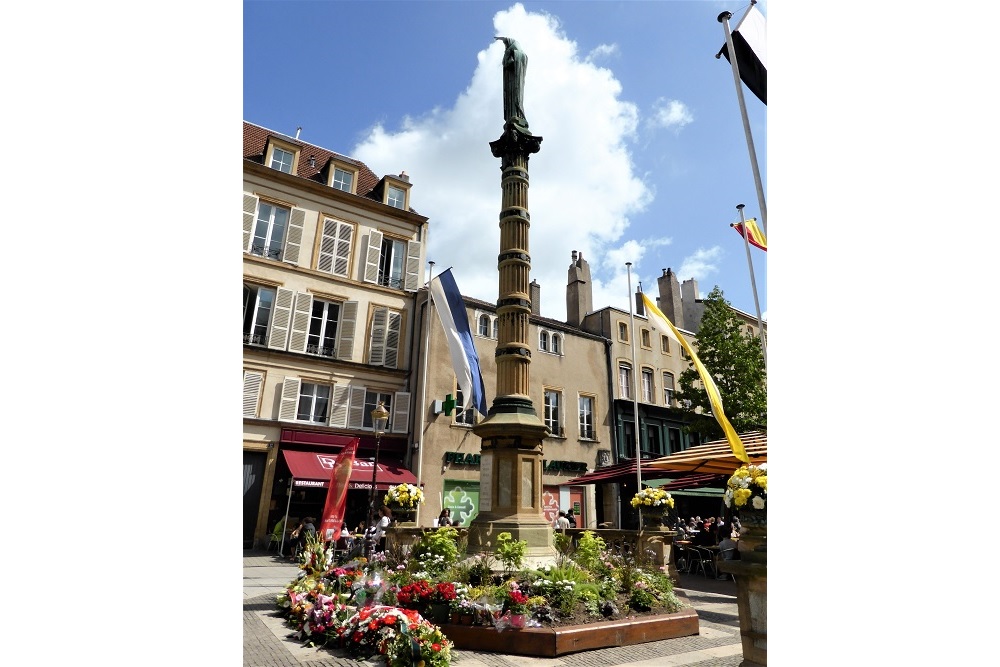Monument Notre-Dame de Metz
High column with a bronze statue of the Virgin and Child at the top.
The ionic column, made of fine yellow stone eight meters high, is the work of Max Braemer, while the bronze statue, one meter ninety high, is the work of the sculptor Jacques Martin.
Two plates hang on the plinth:
"To the very holy
Virgin Mary
The city of Metz
Grateful
1914 - 1918 "
August 15, 1940
Hope
Our blessed
loving
Virgin Mary
August 15, 1945
Recognized "
During the withdrawal of the German troops in 1918, Catholics feared that they would turn the city of Metz into a second Verdun. They asked the Bishop of Metz to make a promise to erect a statue for the Virgin Mary, if the city was spared the fighting. The statue was inaugurated and blessed on the Feast of Our Lady of the Assumption on August 15, 1924, in the presence of bishops and notables.
Place St. Jacques was chosen for its central location and proximity to the cathedral.
On August 15, 1940, Metz was occupied by the Germans again and there are many armed soldiers in the city. The Nazis' ban on gatherings will not prevent the devoted inhabitants from visiting their Our Lady to demonstrate their patriotic attachment to France. In a crowded square, the crowd gathers silently. The statue with a cross of Lorraine is surrounded by flowers in the colors of France.
A hymn rises from the crowd: "Queen of France - Pray for us - Our hope - Come and save us." The crowd then returns to the cathedral in silence and many will continue to pray all night.
Every year on August 15, Assumption of the Virgin Mary, the tradition continues with a papal mass in the cathedral, followed by vespers and procession to the column.
Source: Wikipedia
Do you have more information about this location? Inform us!
Source
- Text: Marie-Christine Vinck
- Photos: Marie-Christine Vinck
Nearby
Point of interest
Monument
Cemetery
- Jewish Cemetery Metz - Metz
- Franco-German War Cemetery Chambière - Metz
- German-French War Cemetery in Mey - Mey




